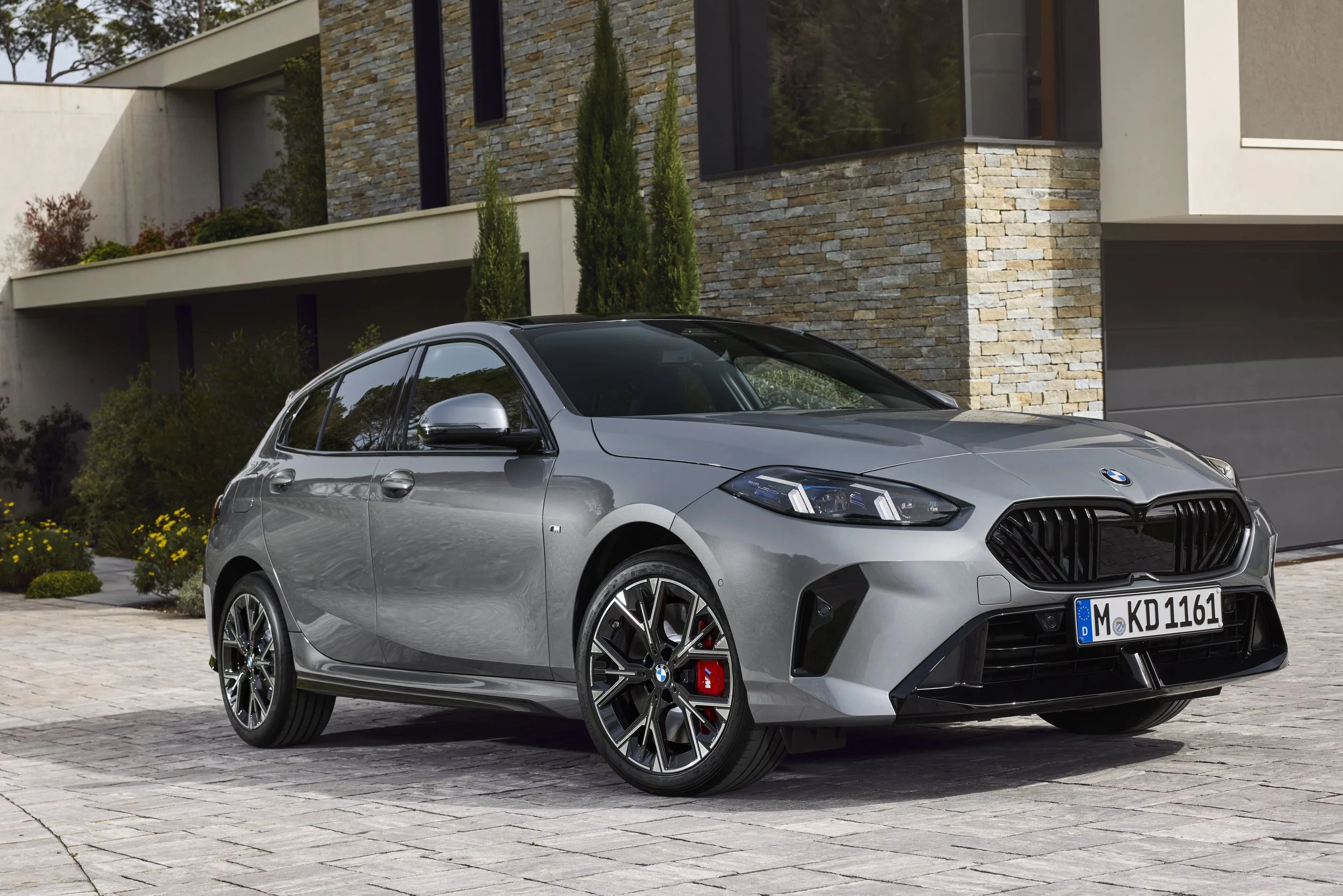One’s two choices aim high
/BMW’s most compact car has undergone a big refit. What about the pricing?
TWO for ‘One’ - and with the entry choice (directly above) from $68,900 and the more fiery flagship (top) leaving $2100 from $100k, BMW’s smallest passenger car still represents as big bucks spending.
The latest 1 Series is a heavily refreshed version of a model that launched in 2019. BMW says the refit is extensive enough to warrant the car being considered new.
To reinforce this, the line arriving in NZ is not only being called a fourth generation, but also gets a fresh codename, F70. The preceding 1-Series was the F40.
Inasmuch as lineage maintains in that, while a touch wider and taller than its predecessor, the incoming car retains an identical wheelbase and hard points, the 2024 car is easily identified, as there are numerous exterior updates. Chief among them is a new nose that features a grille that's smaller than the original car's and now chrome-less, so more in line with the front end of the BMW 2 Series.
There are new LED headlights with subtle, arrow-shaped daytime running lights and indicators, while adaptive beam lights with blue accents are available as an option.
The profile is much less altered; the new nose alone is the reason for the car being longer.
At the back, the lights blend into the tailgate as before, but there's a distinct step between them, and all models bar the top-spec M135 feature hidden exhaust tips within a large gloss black diffuser. Another new addition is the option of a contrast black roof finish.
BMW identified months ago that, with diesel no longer desired, it would restrict to two petrol options - the 120 and that M135 xDrive.
The first has a 1.5-litre turbocharged three-cylinder engine, paired with a 48 volt motor, delivering 125kW/240Nm.
A $6500 Enhancement Pack - 19 inch alloys, steering wheel heating, sunroof, lumbar support and massage function for the front seats, driving assist and a stereo upgrade - and M Sport Pro pack (red brake callipers, roof in black, M seat belts, M Sport front seats, M rear spoiler) respectively add $6500 and $3200 to the base sticker. Then there are assorted special paint finishes, from $2000 to $5000.
The M135 has a 233kW/400Nm 2.0-litre non-hybrid turbocharged four-cylinder; up 8kW, down 50Nm. It strikes 100kmh from a standstill in 4.9 seconds – one-tenth slower than before – and peaks at 250kmh. It can also avail with M Sport trim options, for $2700 (because it already has the black roof and spoiler).
Additional for the flagship is a new M Sport Boost function to quickly set the drive and suspension settings into the highest sports settings, while the M135’s xDrive all-wheel-drive system is lighter than before.
The seven-speed dual-clutch transmission in both now features fully electric actuation, a wider range of gears, and automatic shifting to park when the engine is turned off.
Under the skin, BMW has improved the rigidity of the body structure and chassis connection, installed an additional sleeve on the shock absorber for better stability over small bumps, and reduced body roll during dynamic cornering.
Both models feature a curved dual-screen comprising a 10.25-inch cluster and a 10.7-inch touchscreen running BMW OS 9. The 120 will land with an M Sport Package, adaptive M suspension and 18-inch M wheels.




















